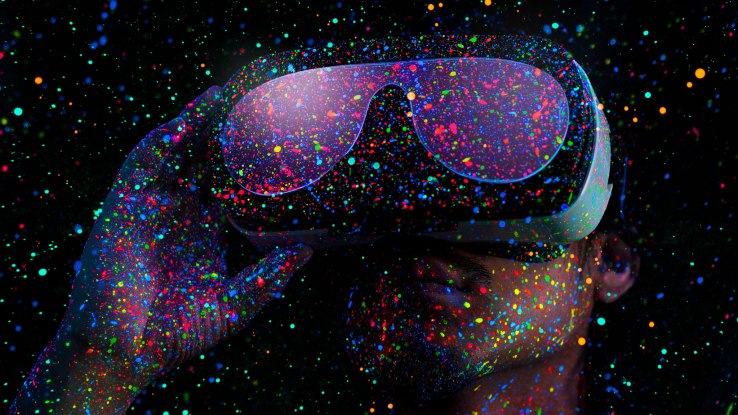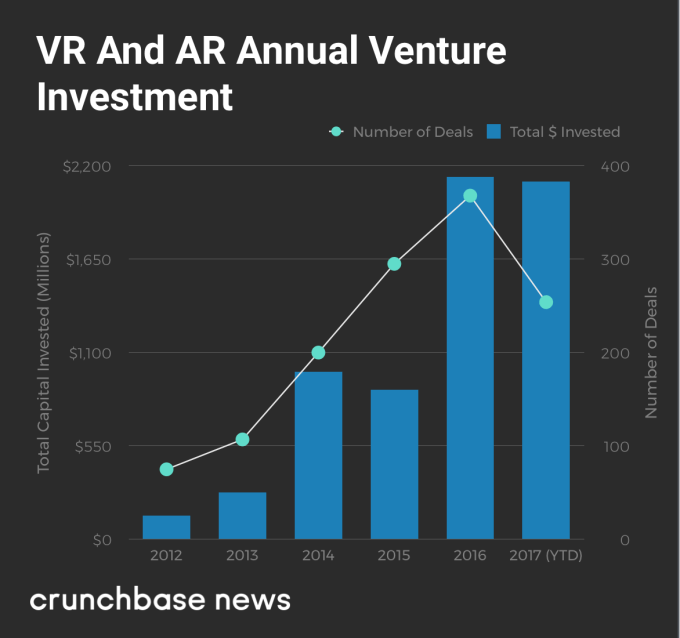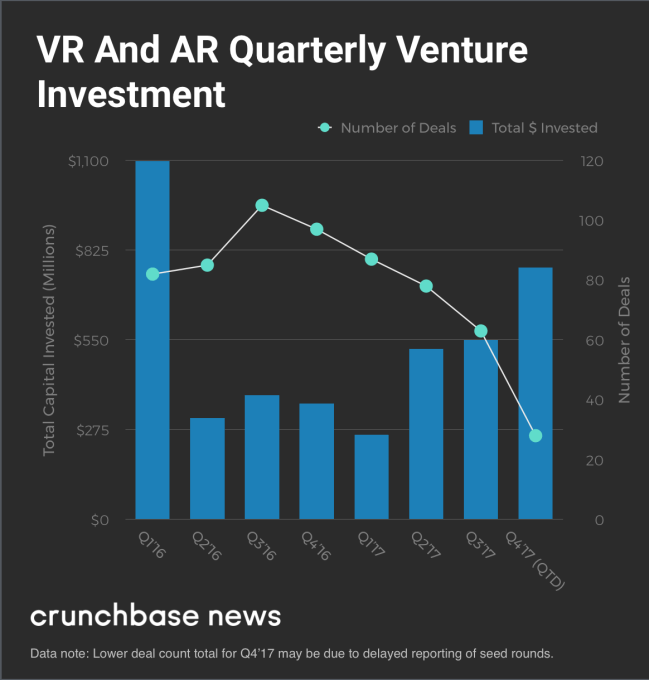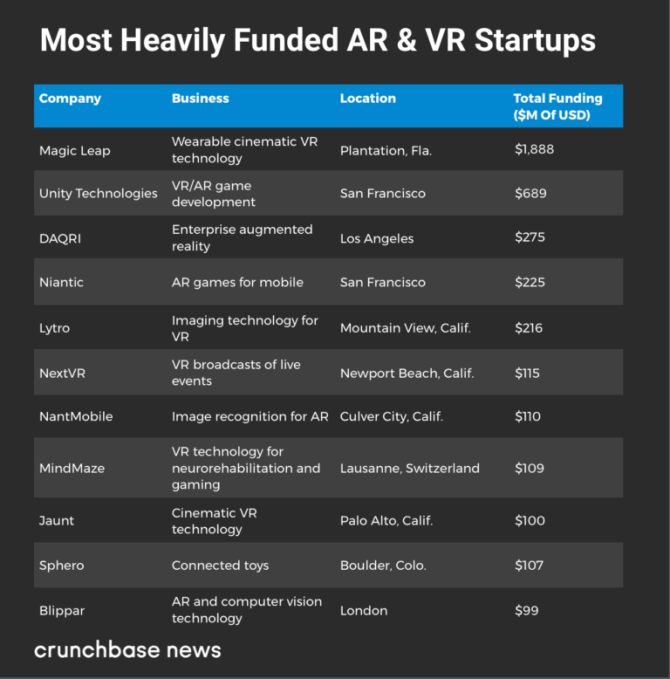Virtual reality gets its groove back

Technophiles tend to overestimate the pace of mass adoption. For example, virtual reality fans expected a lot more of us to be whiling away our days with goggles stuck to faces, immersed in virtual worlds.
Instead, we’re still glued to our cell phones, as VR headset makers struggle to make headway. While consumers snapped up more than 200 million iPhones last year, they bought just a few million headsets. For 2017, those ratios aren’t expected to improve much.
Yet while virtual and augmented reality uptake may be slower than boosters expected or hoped, venture investment hasn’t slackened. Funding for VR and AR startups in 2017 is roughly on par with 2016 levels, a Crunchbase News analysis finds. The year got off to a sluggish start in the first quarter, but investment in the past three quarters has accelerated enough to make up for the deficit.
Investors showed their optimism this week with a $200 million round for Niantic, whose Pokémon GO augmented reality game is the best-known hit for the medium. (Its popularity was no doubt buoyed by the fact that it can be played on a regular smartphone.) Niantic’s mega-round comes as the company prepares to release a new game based on the Harry Potter series.
In total, at least 217 companies in the AR and VR space have raised funding rounds this year, bringing in $2.1 billion, according to Crunchbase data. Of that, more than $900 million went to two companies: Magic Leap and Unity Technologies.
VR and AR over the years
In the chart below, we look at annual investment venture totals for virtual and augmented reality startups, including seed through growth stage.

It shows that the number of completed rounds for VR and AR-focused startups peaked in 2016 and has trended down in 2017, though some of that may be attributed to lag time commonly seen for reporting of recent seed-stage financings. Investment totals, meanwhile, peaked last year and look on track to stay about flat in 2017.
In the next chart, we look at quarterly investment totals for the past two years. It shows that total investment peaked in Q1 of 2016, mostly due to a single massive round of $800 million for Magic Leap, the stealthy, Florida-based developer of cinematic VR technology. After slowing down late last year, funding totals started picking up in the second quarter of 2017 and have continued to rise.

Following the money
As one might expect, a few companies accounted for the bulk of invested capital. We mentioned Magic Leap and Niantic, as well as Unity Technologies, provider of a platform for developing augmented and virtual reality games.
In all, there are at least 11 AR and VR startups that have raised total financing of about $100 million or more. We list them below.

Exits trickle in
Investors keep putting money into VR and AR companies, but they’re still not getting much back.
We haven’t seen a really big acquisition in the space since Facebook’s $2 billion purchase of Oculus in 2014. Venture-backed virtual and augmented reality companies haven’t gone public yet, either. It’s hard to find candidates that may even go public in the short term, given that many are pre-revenue.
That said, acquirers are snapping up early-stage companies at a decent clip, with some big tech players entering the fray.
When will excitement finally lead to adoption?
Earlier this month, for instance, Apple bought Vrvana, the Canadian developer of an augmented reality headset, for a reported $30 million. Over the summer, Google picked up Owlchemy Labs, a venture-backed VR game developer.
Given that all of the “Big Five” largest U.S. technology companies (and most of the global Top 20) are dedicating significant development efforts around VR and AR, it’s not unrealistic to expect a speedier pace of acquisitions ahead.
It’s not about the hype
So where are we now in the VR/AR venture cycle? Seeing the sharp gains last year in VR funding, coupled with disappointing headset sales, it’s easy to slip into a narrative about the space being overhyped.
What this kind of simplification misses, however, is that VR and AR are technologies with an innate coolness factor. Magic Leap, for instance, has a studio where it can create life-size reproductions of a T-Rex. MindMaze connects the brain to virtual worlds. It’s expected that this kind of stuff will generate excitement in entrepreneur and investor circles.
But when will excitement finally lead to adoption? Clearly, VR and AR haven’t reached the masses yet. But it seems the technology’s most devoted and deep-pocketed fans still see it headed in that direction.
Featured Image: Yagi Studio/Getty Images